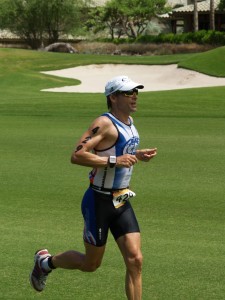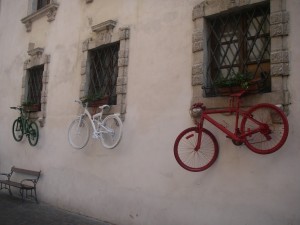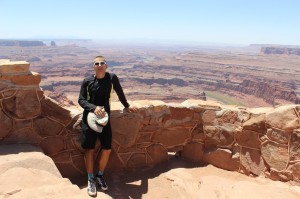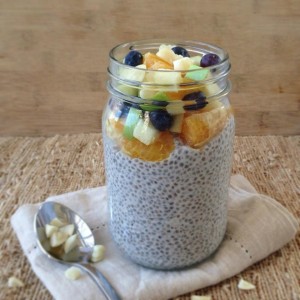Make the time for a proper warm up before your workouts. Here is a video I had posted earlier this year on a short, effective warm up for the legs using "The Stick"
Blog
Work the Core
 |
| Photo: Bill Greentree |
I was reviewing some articles the other day and came across a good one on "The Core", how it is used when running and some simple exercises you can implement.
When you have a moment, check it out The Core
Happy Labor Day and make it a great week.
Coach Eric
ABC’s of optimal health
It has been a while since my last post. This is due to two things: 1) way too much outdoor fun in the Colorado summer and 2) not having any topics that have motivated me to write more on. So, after some good suggestions from Cortney Martin, you can check her blog out here at http://www.cortthesport.com/ and some more reflecting over mexican food the other night I thought I would start real simple.
If you could do just 3 things that would help you improve & maintain optimal health, what would they be?
Adequate sleep - Some are fine on 6-7 hours, others need 8+ Find what your body needs and get to bed!
Balanced nutrition - Keep it simple here 80% of the time be mindful in your food choices, 20% of the time allow yourself some flexibility just don't go nuts.
Consistent exercise - Anything is better than nothing and there are so many ways to get a workout in. Just try to do something on most days of the week.
So, just like when you were a kid, practice your ABC's
Make it a great week!
Coach Eric
Just a few benefits of using the Vasa Ergometer
I was going to write about swim training this week, but I came across a great post, first in a 3 part series that Cortney Martin wrote for VASA Inc that I thought you should read.
Here is the link titled When the pool is not an option
Make it a great week of training,
Coach Eric
Medley Monday add’s some variety
 |
| The Italian's love their cycling |
When I was swimming, I used to love doing IM workouts on Monday's and coined the phrase: "Medley Monday". This was followed by "Turbo Tuesday", Wacky Wednesday", Thrasher Thursday", "Fun Friday", and "Super Saturday". As triathletes we compete using the freestyle stroke, but that does not mean we should ignore the other strokes. I feel it is important to train all the strokes to enhance ones feel for the water, help with injury prevention and add some variety to the training session. Now you don't have to be turning out 400 IM's like Ryan Lochte and Michael Phelps, but if you do decide to embrace the other strokes, put backstroke at the top of the list. It is the one stroke that lets you unwind your arms a bit and real easy to work a few strokes in during any race to just loosen up before rolling back onto your stomach. Plus you can see who has been smacking your feet!
Taking the "Medley Monday" approach a bit further, one can apply it to running and cycling very easily. Mix up training routes into A) flat, B) rolling, C) hills, or D all of the above.
Mix up training intensity into A) easy, B) moderate, C) hard, D all of the above
Now, I am not saying you should vary your training all the time, but during different times of the year, you most certainly should include a good mix of both training routes and intensities. This will enable you to become a more balanced athlete in the 3 disciplines of triathlon and allow you some time to work on your weakest sport while maintaining fitness in you strongest.
Training for triathlon should never be boring as there are so many different ways to string workouts together and still achieve your training objective for the day. One of my favorites is a 10 minute session on the Vasa Ergometer working on technique and a few short bursts of power. Then hit the road on the TT bike for 55-60 minutes that includes 3 x 10 minutes @ tempo pace with 1 minute recovery between and finish up with a 30 minute run mixing in drills to work on foot speed.
I would enjoy hearing about your favorite go to workout or a creative workout you have done in the past, so please leave a comment below.
Make it a great week of training,
Coach Eric
Stand up to better health
Now we all know that exercise is part of a healthy lifestyle, along with balanced nutrition and adequate sleep. But recent research is showing that we are spending more and more time sitting on our bum and too much sitting may shorten your life up to 2 years. So, whether you are exercising 5 hours a week or 15 hours, be mindful of any prolonged time spent in a seated position. Here are some simple things to incorporate into your workday or any part of the day for that matter to help break up time sitting.
In the office
- On the phone, stand up from time to time.
- Instead of sending e-mail to co-worker, if possible walk over and talk to them
- Set a timer to go off every 30 minutes as a reminder to stand up. The key to this one is placing away from your desk so you have to get up to turn it off and reset it.
- Take the stairs instead of the elevator
What to do when you stand up
- Raise your arms over your head for an easy stretch
- Roll your neck in counter and counter clockwise direction
- 5 deep breaths keep shoulders relaxed
- Balance on 1 leg, then the other
- Short walk break 30-60 seconds
Anytime during your day
- Walk, run or ride a bike instead of driving the car for errands close to home
- Short walk after any meal
- Park you car far from the door at the store
- Walk backwards
- Swing one arm backward, then the other, then both at the same time
- Stretch any muscles that may be experiencing tightness
- Walk in place lifting knees high
I encourage you to incorporate any one of these suggestions during the next 7 days and see if it makes a difference in how you feel both mentally and physically. Sometimes just the smallest change can have a big impact on your day.
Make it a great week and stand up for your health!
Good notes, smarter training, faster racing!
This morning I had a track session comprised of 200's and 400's after an easy ride to warm up the legs.
Before I hopped on my cruiser bike for the ride to the track, I did something that I have found helpful over the years before starting a workout, I reviewed my training journal.
I would encourage any athlete to keep a training journal. Some of you may prefer to write in an actual paper journal, others may find it easier to update one on the computer. Either is fine, it just depends what works best for you and gets you taking notes on your workouts.
How detailed should the journal/notes be? Well, that is up to you but here is what I would call my top 10
Type of workout (swim, bike, run, etc...)
Duration
Purpose/Intensity
Drills/Technique work
Any data you collected (HR, Power, lap splits, etc...)
Nutrition during
Morning resting HR
How much sleep
Energy level both physical and mental
Weather conditions
By reviewing my notes in the journal, I knew what I had done the previous week. So, the goal this week was to see if I could repeat the performance from the prior week (hold same times) and see if it felt just a little bit easier. Fortunately, things worked out well and the workout was a success. One of the things I noted from the previous week was that I had a good warm up that included some drills to finish it off. This left me feeling good and warmed up, ready to start the main part of the session.
Keeping good notes allows you to see if the training you are doing is helping you to improve. Also, very helpful if an injury pops up, you can review what you have been doing in previous workouts to see if overtraining is an issue.
Good notes allow you (and your coach if you have one) to better plan future workouts. This leads to smarter training and for those that race, going FASTER!
Finally, once you have determined how you will record your training, determine when you are most likely to do so (right after the workout or later in the day) and get in the habit of doing it consistently.
Make it a great week of training,
Coach Eric
Injury prevention = Improved performance
Recently I had the opportunity to speak about swimming biomechanics at a local triathlon seminar here in Fort Collins. One of the speakers, Craig Depperschmidt from Rebound Sports and Physical Therapy http://www.reboundsportspt.com/ spoke about injury prevention and I have posted some of the key points from the talk below.
3) Natural human asymmetry. Humans are not symmetrical, yet we participate in activities requiring equal amounts of left and right activities. This often leads to common, predictable patterns of compensation.
I believe that one can only swim, bike and run so much. In in addition to rest, one of the keys to improving your performance once you have maximized your training time will be the attention to injury prevention exercises that will best balance your body.
Make it a great week of training.
Coach Eric
Help a Newbie
We all were beginners in the sport of triathlon at one time. I have learned so much since I started racing in 1986 and grateful for all I have learned from my athletes, friends and training partners over the years.
Summer = Smoothies
With the weather getting warmer, that can make fueling up after workouts a bit more challenging because you need more hydration along with calories. A simple way to accomplish that is to mix up some of your favorite ingredients in the blender, then just sip away. Not only does the post workout smoothie taste good, but if your workout was a hot one, a cold beverage really hits the spot. Just watch out for the brain freeze if you drink it too fast!
Here are some smoothie recipes to try after your next workout, for breakfast or lunch or in between meal snack. Ingredient portions to your taste buds liking and how thick or thin you like your smoothie
"Hawaiian Style"
"Banana Bliss"
"Taste bud frenzy"
1 cup coconut milk
2 Tbs. freshly squeezed orange juice
1 Tbs. maple syrup (or ¼ tsp. stevia)
½ tsp. vanilla extract
¼ tsp. ground cardamom
½ an orange, peeled, segmented, and sliced
½ of a green d’Anjou pear, sliced thin
a handful of blueberries
a handful of macadamia nuts, chopped
2 ounces espresso (or very strong coffee)8 ounces low-fat Greek yogurt2 tablespoons sweetened ground chocolate1 banana







